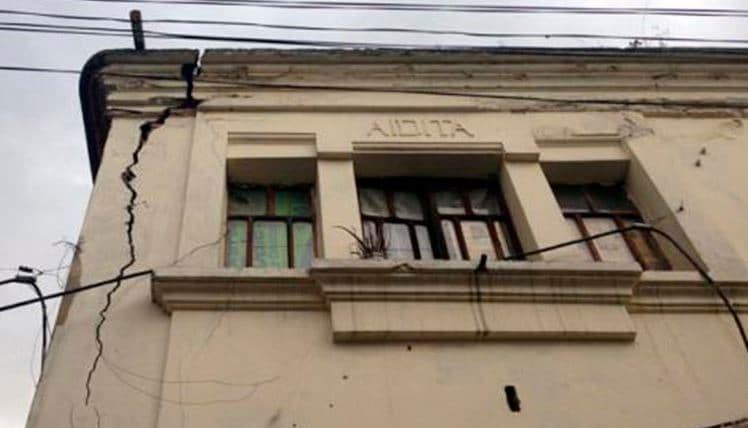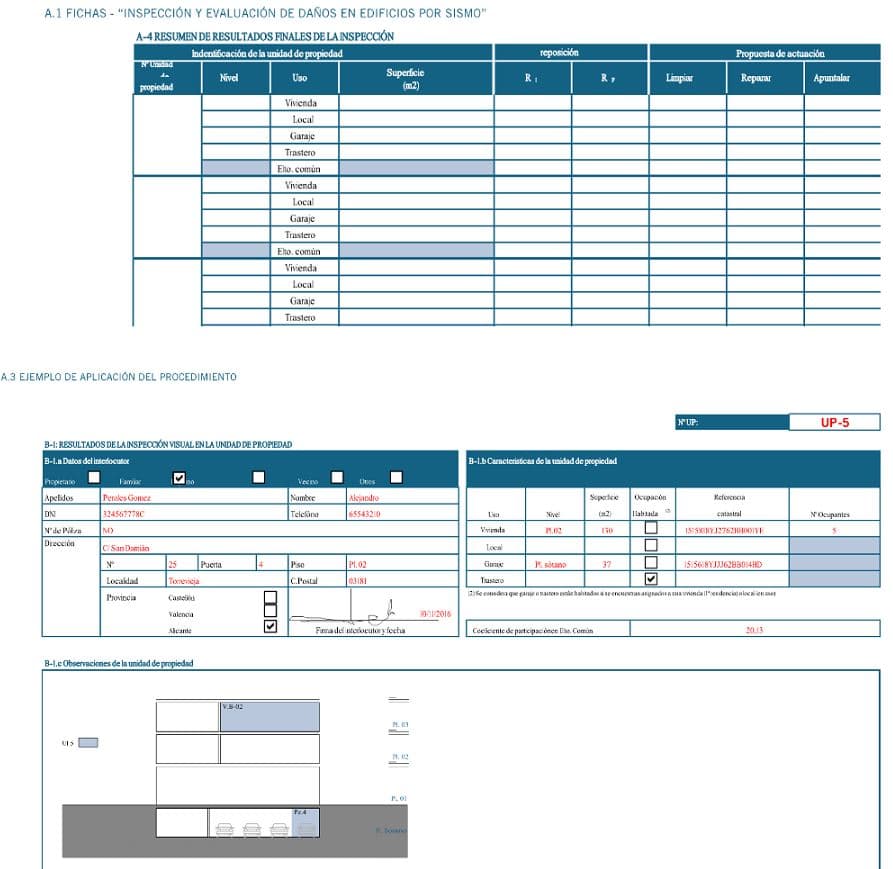-
Phone Number
-
Email Address
Throughout history natural disasters and catastrophes marked by seismology with earthquakes that have almost unchecked the Richter scale, have generated thousands of people lost their houses and homes without counting the human losses, unfortunately.
From an architectural perspective, being able to understand how to assess, detect and report damage to houses, houses or structures against an earthquake is a matter of necessity and obligation for all those involved in the world of architecture or engineering in some such delicate moments.
 In this article We are going to try to break down from a technical perspective
In this article We are going to try to break down from a technical perspective
For this, we will provide different guides and documents of information as well as useful and practical templates that will serve to detect both cracks and more important or even the collapse of the building, from a previous perspective, to a more exhaustive long-term analysis term.
Content menu:
If we do not know roughly the magnitude of a earthquake it is difficult to be able to assess its subsequent damages coherent way. Two different concepts come in here; the measure of the energy released, and secondly, the effects what does it produce in a certain area.
To better understand the severity of the earthquakes in the following scheme we will see; the magnitude and the intensity.
As we see in the diagram, now it's time to shell how it affects the intensity of the earthquake according to its severity:
The magnitude of an earthquake or earthquake is measured in a magnitude, although there are different scales of magnitude seismological normally we always talk about the scale of Richter , which is calculated from the record in seismic waves by means of devices called seismograms.
We can see the degrees and effects of that released energy the following local magnitude scale or magnitude scale Richter on earthquakes :
This scale, evaluates the effects and intensity caused by an earthquake on buildings or objects and people . It is a scale – parallel to the Richter – which defines more specifically the extent and severity of the damages. (Although it is a European scale – Information in MS-98, identifies very well the relationship between Earthquake Degree, People or Objects and Construction Systems)
Now we know how strong a earthquake and what is its relationship with reference to the people or objects. But… How do we evaluate the intensity of an earthquake versus construction?
Well, for that we have the following scheme (It is related with the previous chart – EMS-98 earthquake scale). The class of vulnerability we can see them from HERE, (The document is free in PDF) but the "A" is the least severe and would start with the previous table by the chapter «V. Strong.”
We remember again that these last two schemes are referring to a European scale, but we have added them for their consistency in the assessment, understanding that it is possible that there are other valuation systems and more from the countries of South America.
Although the question may seem simple, it actually we could spend hours and hours identifying the aspects important technical knowledge of how an earthquake affects the structure of a building or a house.
So to be consistent, let's add different visual schemes to understand the most important aspects relevant:
How can we check the effect of an earthquake on buildings produces lateral movements on the himself, since he is not prepared to assimilate them. The earthquake-resistant buildings , look for a balance between strength and the ability to deform without break, this aspect is called ductility.
An example of earthquake damage applied to a new construction building in its structure would be:
The seismic resistance in buildings contemplates seismic regulations that will oblige companies construction companies to build buildings with coefficients security maximums. An example of how to build earthquake-resistant buildings would be:
It must be taken into account that technological advances contribute new construction systems that improve the anti-earthquake capacities of buildings , both in new materials, new forms of structures or construction, and the famous earthquake-resistant foundations .
But, yes, we already have a building built… How can we we can improve the resistance of an existing building to a earthquake? . A proper rehabilitation could simplified into the following scheme:

Determine a safety protocol for buildings and houses after an seism has to be a priority with which we must understand some follow-up guidelines. The review of the state of the house, of the place of work or of a building must be immediately to be able to identify the different signals timely.
From a general perspective, we can identify and how to know if your house has earthquake damage step by step with the following scheme:
The above infographic relates from a generalized aspect, but what we are really interested in is an evaluation technique of the state of the dwelling or the building before a earthquake .
We remember a curious article about ingenious design of how a pot can save your life.
Keep in mind that after an earthquake the preliminary evaluations are important and necessary both to prevent possible building collapses, threats and risks, such as accidents, and of course, people can access their homes or not, with complete peace of mind. So we will have:

Obviously in both cases they are the technicians (Architects, technical architects, engineers…ect) who should determine the correct verdict. In order to practice with coherence the two previous cases from a perspective technical and reliable, We have searched for two documents that reflect very well the steps that we must follow.
Watch out! They are documents that we can use as a base and that In any case, they will replace the appropriate regulation of each country, but as a guide they seem to us of great relevance... Let's start!
This quick guide is intended to be a characterized procedure for its simplicity and agility while complying with the requirements and specifications established by a administration before an earthquake.
The goal is to generate a report that reflects the extent and assessment of the damage suffered in a earthquake from a technical point of view, their relationship with that emergency situation, the social situation or family, and facilitate the tasks of managing aid before administration derived from an emergency situation.
The file that we can see from HERE is based on:
We remind you that we have three technical articles that we can more information on the construction characteristics of the buildings and materials:
The evaluation and inspection of damage to buildings by earthquakes certainly needs one more report detailed. This will be the objective of the document that we are going to present, where the location of possible lesions of structural or non-structural elements, apart from the fact that it will be more exhaustive, we will have recommendations on the subsequent actions that should be practiced as well as possible avenues of aid.
It is a document for the scope of application of all buildings with residential use (Residential), of premises shops, garages or possible storage rooms that have suffered damage as a consequence of an earthquake.
To access this template on evaluation of structures and begin to gain perspective on the
This document is free if we want it in format digital (Paper is paying), so we will have to mark «Document Viewer», and then «add to cart». Review all the data that indicates the user, and we will be able to download the report for zero euros.
We will download a compressed file, where when opened we can see:
Although at the beginning he talks about Spain and its situation seismological. You will be able to verify that it is adaptable to any zone. Later on there are different explanations and tips, and finally the forms to fill in and an example of token resolved:

To expand the information we wanted to provide a series of PDF documents that, due to their quality, we believe are of interest:
There are different platforms that record the seismic movements in real time around of the world so that we can consult.
To consult the earthquakes in real time in Spain , whether of today, yesterday or long ago, we have the National Geographic Institute where from the following link we can make a query about map.
To consult the earthquakes in the world in time real , one of the most recognized portals that monitors seismic movements is the IRIS what We can consult from HERE. (Above all the portal there is two maps that can be clicked and searched on pama geographic)